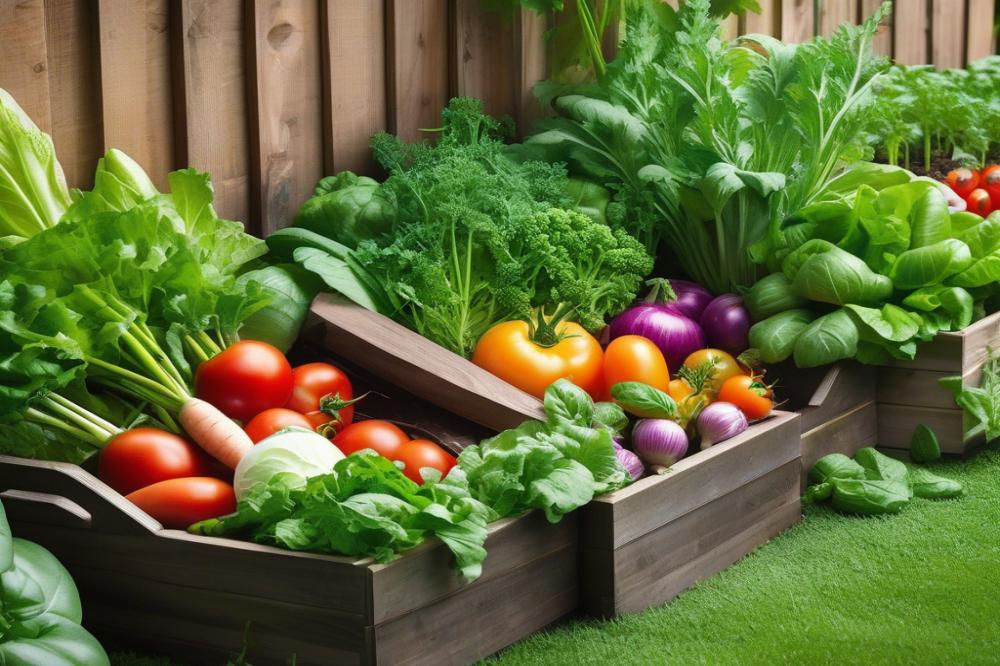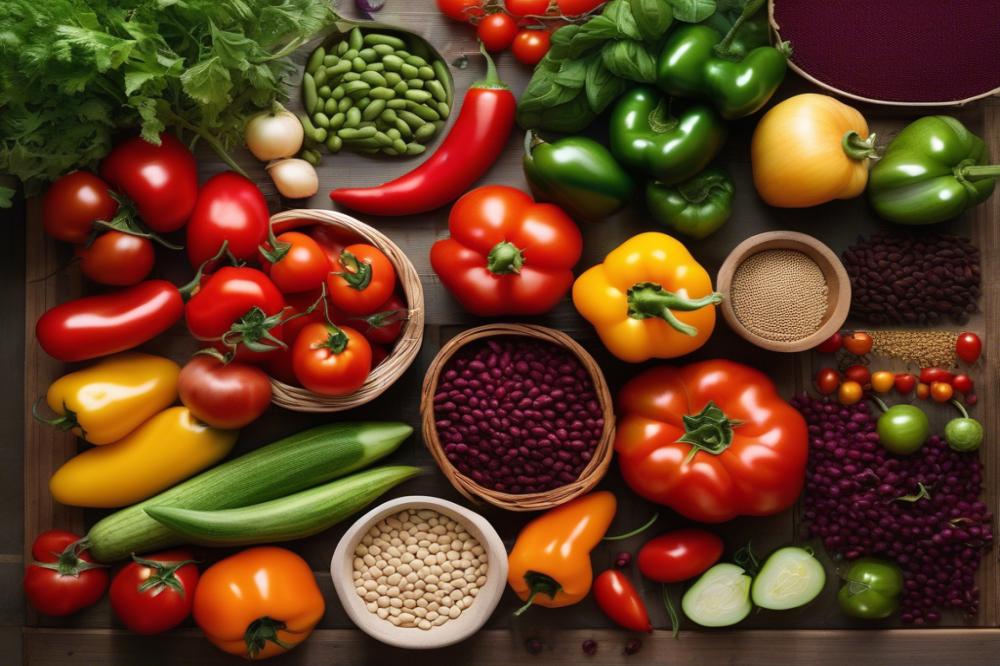How to Cultivate Navy Beans for Cooking and Storage
Navy beans, small, oval-shaped legumes, are well-loved for their creamy texture and mild flavor. These beans are a staple in many kitchens, particularly in dishes like baked beans and soups. Their versatility makes them a favorite among home cooks and professional chefs alike. Not only are they delicious, but also packed with protein and essential nutrients, navy beans contribute to a balanced diet.
Growing your own beans can be both rewarding and practical. With the right knowledge and care, cultivating navy beans at home allows you to have a fresh supply ready for your meals. Homegrown beans also offer the chance to control how they are grown, free from harmful pesticides and chemicals. This aspect is essential for health-conscious individuals and those keen on sustainability.
This article will cover several important points about navy bean cultivation. Readers can expect to learn about the ideal growing conditions, planting techniques, care throughout the growth cycle, and harvesting methods. Additionally, we will include storage tips to maintain freshness and flavor. If you’re eager to know how to get started with #anchor_text_1# and enjoy home-cooked meals, you’ve come to the right place. By the end, you’ll feel equipped to embark on your journey of bean cultivation and preservation. For those who doubt their gardening skills, remember that every effort counts. Even small steps can lead to a bountiful harvest and a delicious pantry filled with home-grown goodness. Best of all, the satisfaction of cooking with your own produce is unmatched. So, let’s dive in and explore how to successfully grow and store your navy beans, ensuring an abundant supply throughout the year with #anchor_text_2#.
Understanding Navy Beans


Navy beans, also known as pea beans, are small and oval-shaped legumes. Their color is a creamy white, which contributes to their appeal in various dishes. One of the distinctive features of these beans is their subtle flavor, which often enhances the taste of many recipes.
Nutritionally, navy beans are a powerhouse. They are rich in protein, making them an excellent choice for vegetarians. Fiber content is high, promoting digestive health. They also provide essential vitamins and minerals, including iron and folate. Adding navy beans to a diet can help maintain heart health and stabilize blood sugar levels.
Culinary Uses and Recipes
Many cooks appreciate the versatility of navy beans. They often find their way into soups, stews, and salads. A common dish is the classic navy bean soup, which is hearty and satisfying. In addition, these beans can be mashed and used in dips or spread on toast.
Finding recipes that highlight the subtle flavor of navy beans is easy. Slow-cooked baked beans are a traditional favorite, often served at barbecues. You can also incorporate them into chili for added protein and texture. Various cuisines have embraced navy beans, demonstrating their adaptability.
Preparing to Grow Navy Beans


Choosing the Right Location and Soil Conditions
Finding a suitable spot for planting Navy beans is crucial. They thrive in areas with full sun. Look for a location that receives at least six hours of sunlight daily. The soil should be well-draining. Navy beans do not fare well in waterlogged conditions. Aim for soil that is rich in organic matter. Testing soil pH is a good idea; a range between 6.0 and 7.0 is ideal.
Essential Tools and Materials for Planting
Gathering the right tools makes the planting process smoother. A shovel, hoe, and rake are essential for preparing the garden bed. Planting beans can be done by hand or with a seed drill. Mulch is useful for controlling weeds and retaining moisture. Having a watering can or garden hose on hand ensures your seeds get the moisture they need right after planting.
Selecting Quality Seeds for Optimal Growth
Choosing high-quality seeds plays a vital role in your crop’s success. Look for certified seed packets at local garden centers. Inspect for signs of damage or blight. Consider heirloom varieties for better taste and nutrition. Healthy seeds encourage robust plants and a bountiful harvest.
Understanding Climate and Seasonal Considerations
Navy beans need warm soil to germinate efficiently. Ideally, planting should occur when the soil temperature reaches 60°F. Late spring is generally the best time to sow your seeds. They require about 90 to 100 days to mature fully, so think ahead before planting. Protecting your plants from late frosts is important, as frost can kill young seedlings.
Planting Navy Beans


Starting your journey with navy beans is both exciting and rewarding. Follow this step-by-step guide to ensure a bountiful harvest. First, choose a sunny location with well-drained soil. This crop thrives in environments where they can soak up lots of sunlight. Prepare the soil by tilling it to a depth of about 12 inches, breaking up any clumps.
Optimal Planting Depth and Spacing
When it comes to planting navy beans, depth matters. Plant seeds about 1 to 1.5 inches deep. This allows for proper germination. Space each seed about 2 to 4 inches apart. Rows should be about 16 to 30 inches apart to give the plants enough room to spread. These guidelines will help you maximize your yield.
Watering and Fertilization Needs
Beans need moisture, especially during their early growth period. Water the plants regularly, aiming for about an inch of water per week, either from rain or your hose. Avoid letting the soil dry out completely. Fertilization is also crucial. A balanced fertilizer applied before planting can aid growth. However, too much nitrogen can lead to lush foliage but fewer beans.
Common Planting Mistakes to Avoid
New gardeners often make some common mistakes with navy beans. One major error is planting too early. Soil temperature should be at least 60°F for the best results. Cold soil will delay germination. Another pitfall is overcrowding the seeds. It’s important to stick to proper spacing guidelines. Dense planting can lead to weak plants and poor yields. Finally, do not overlook pests. Be vigilant and check your plants regularly for signs of trouble.
Caring for Navy Beans During Growth


Requirements for Sunlight, Water, and Nutrients
Navy beans thrive in full sunlight. Aim for at least six to eight hours of direct light each day. Soil that drains well is essential, as these plants do not tolerate soggy roots. Watering should happen regularly, especially during dry spells. Ideally, a deep watering once a week helps develop strong roots. Pay attention to nutrients in the soil. A balanced fertilizer or compost can be beneficial, particularly at planting time.
Pest and Disease Management Strategies
Common pests include aphids and bean beetles. Regularly inspect plants for signs of these invaders. Insecticidal soap can help combat infestations without harming beneficial insects. Fungal diseases are another concern. To minimize risk, rotate crops each year. The practice of mulching can also prevent soil splash, which leads to disease spread. Don’t forget to remove any infected plants promptly.
Weeding and Maintaining Garden Beds
Weeds compete for nutrients and water. Keeping the area around navy beans free of weeds is crucial. Pull weeds by hand or use a hoe carefully so you don’t disturb the bean plants’ roots. Applying mulch around your plants can help suppress their growth. Regularly checking the garden bed helps to maintain a healthy environment for your crops.
When to Stake or Support Beans
Most navy beans do not require staking. However, if you notice some varieties leaning or flopping over, provide some support. Small stakes or trellises can help plants grow upright. This support is especially important during windy weather. As the plants grow, be vigilant and observe their need for assistance. Supporting them early is better than waiting too long.
Harvesting Navy Beans
Signs that Navy Beans are Ready for Harvest
Navy beans are typically ready when the pods turn a dry, brown color. Most gardeners find that the leaves also start to yellow and fall off the plant. Checking the pods for firmness is crucial. They should have a hard feel and be nearly dry. If you press on a pod and it feels crinkly, it’s often a good indication of readiness. Timing is key; harvest should ideally occur on a sunny day to help minimize moisture.
Best Practices for Harvesting to Ensure Quality
Using sharp shears to cut the stalks is one effective way to harvest these beans. Aim to leave a little stem on each pod to avoid damage. Gather the entire plant when you can; this allows the beans to continue drying a little longer. Placing them in a single layer on a clean, dry surface helps air circulate, which prevents mold. Avoid storing them outdoors; a cool, dry shed is preferable.
Techniques for Shelling and Cleaning the Beans
Once the beans dry completely, it’s time to shell them. Gently squeezing the pods often causes them to pop open. Work over a bowl to catch the beans as they escape. For larger batches, consider using a bean sheller. After shelling, you’ll find it necessary to clean the beans. Rinse them under cold water to remove dirt and debris. Draining them well will help prevent spoilage during storage. Finally, allow them to air dry completely before placing them in jars or bags.
Storing Navy Beans
Methods for Drying Navy Beans for Long-Term Storage
Navy beans must be dried properly to store them for an extended period. Harvest them when the pods are brown and dry. This is crucial for maintaining quality. Use a combination of sun drying or air drying to reduce moisture content. Spread the beans in a single layer on a clean surface. Turn them occasionally for even drying. Alternative methods include using a dehydrator or an oven set to a low temperature.
How to Properly Store Dried Beans to Preserve Freshness
Once dried, it is vital to protect the beans from moisture. Store them in a cool, dark place. Avoid areas that can cause temperature fluctuations. A pantry or cupboard is often ideal. Regularly check for signs of mold or moisture. Any spoiled beans should be discarded immediately. It’s also important to keep them out of direct sunlight to prevent fading and nutrient loss.
Best Containers and Conditions for Storage
Choose airtight containers for the best storage results. Glass jars, plastic buckets, and vacuum-sealed bags work well. Ensure the lids or seals are tight to minimize air exposure. Label each container with the date of storage. That helps keep track of how long the beans have been in storage. The ideal storage temperature is below 70°F. Keep them in a humidity-controlled environment whenever possible. This can significantly extend their shelf life.
Wrapping Up the Journey of Growing Navy Beans
Cultivating navy beans comes with its own set of rewards. From selecting the right seeds to understanding planting and care practices, each step plays a vital role in achieving a bountiful harvest. Remember to provide your plants with plenty of sunlight and water, and be mindful of pests that may disrupt their growth. Proper timing is also crucial for gathering the beans at their peak.
Consider growing navy beans for your personal cooking needs. Not only is it a fulfilling gardening activity, but it also offers the chance to enjoy fresh, flavorful beans right from your backyard. Imagine crafting hearty soups or nutritious salads with beans you’ve grown yourself. Trying this out could open a new door for home-cooked meals.
The advantages of homegrown beans extend beyond taste. Growing your own navy beans allows you to control how they’re cultivated, often resulting in beans that are free from harmful chemicals. With some planning and effort, storage becomes an easy task. Dried navy beans can last for months, allowing you to stock up for your culinary creations. Embracing this experience can deeply enhance your appreciation for each meal prepared with your homegrown harvest.
So, why not take that leap? Start planting navy beans now. The rewards you’ll gain are immense, sparking a sense of accomplishment while contributing to your kitchen needs. Happy gardening! #anchor_text_3# and #anchor_text_4#.



